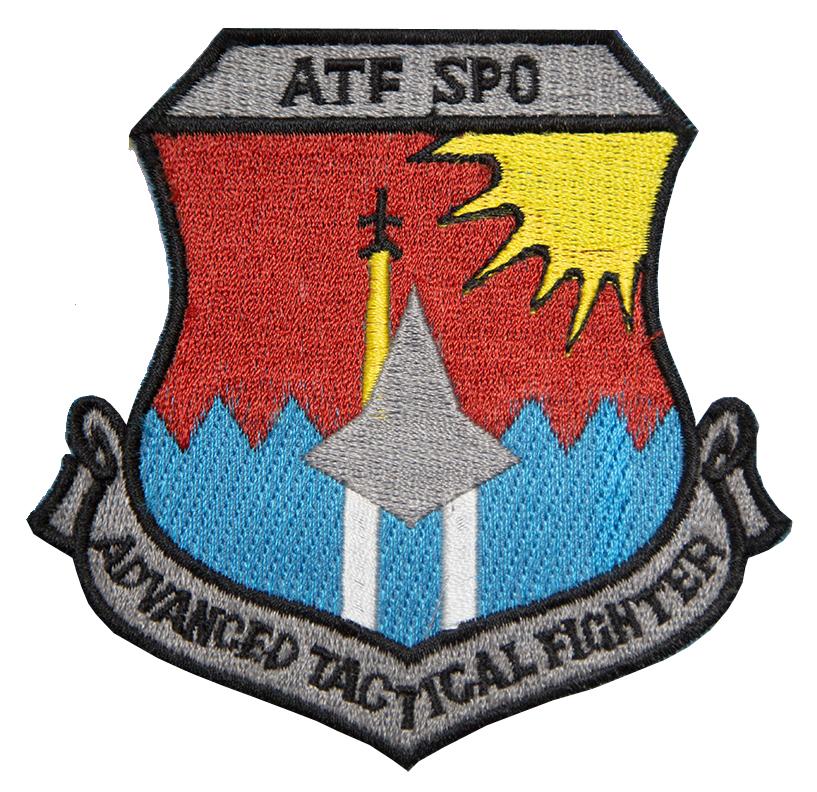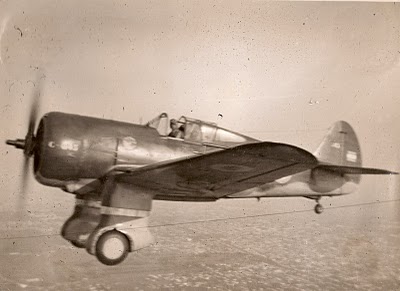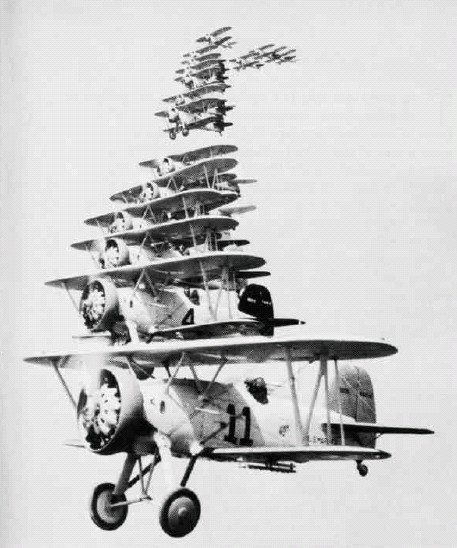|
43d Tactical Fighter Squadron
The 43rd Fighter Squadron is part of the 325th Fighter Wing at Tyndall Air Force Base, Florida. It conducts advanced fighter training for F-22 Raptor pilots. The squadron is one of the oldest in the United States Air Force, its origins dating to 13 June 1917, when it was organized at Kelly Field, Texas as the 43d Aero Squadron. The squadron deployed to England as part of the American Expeditionary Force during World War I. The squadron saw combat during World War II, served in the Vietnam War and later became part of the Alaskan Air Command (AAC) during the Cold War. Mission The 43d Fighter Squadron is responsible for providing air dominance training for the F-22 Raptor. History World War I The 43d Fighter Squadron traces its lineage to the 43d Aero Squadron, first activated 13 June 1917, at Camp Kelly, Texas. In March 1918, the squadron moved to England, where it trained until reassigned to France where it landed on 25 October, reaching on the same day the Air Service ... [...More Info...] [...Related Items...] OR: [Wikipedia] [Google] [Baidu] |
F-22A Raptor
The Lockheed Martin/Boeing F-22 Raptor is an American Twinjet, twin-engine, Jet engine, jet-powered, Night fighter, all-weather, supersonic Stealth aircraft, stealth fighter aircraft. As a product of the United States Air Force's Advanced Tactical Fighter (ATF) program, the aircraft was designed as an air superiority fighter, but also incorporates attack aircraft, ground attack, electronic-warfare aircraft, electronic warfare, and signals intelligence capabilities. The prime contractor, Lockheed Martin Aeronautics, Lockheed Martin, built most of the F-22 airframe and weapons systems and conducted final assembly, while program partner Boeing Defense, Space & Security, Boeing provided the wings, aft fuselage, avionics integration, and training systems. First flown in 1997, the F-22 descended from the Lockheed YF-22 and was variously designated F-22 and F/A-22 before it formally entered service in December 2005 as the F-22A. Although the U.S. Air Force (USAF) had originally plan ... [...More Info...] [...Related Items...] OR: [Wikipedia] [Google] [Baidu] |
Issoudun Aerodrome
Issoudun Aerodrome was a complex of military airfields in the vicinity of Issoudun, Centre, France. They were used during World War I as part of the Third Air Instructional Center, American Expeditionary Forces for training United States airmen prior to being sent into combat on the Western Front. It was at that time the largest air base in the world. Today the entire complex consists of agricultural fields, the military facility totally obscured with no trace of its wartime history. History Background By the summer of 1917, two and a half years of the air war had begun to take a serious toll on the number of French and British aviators. While the United States possessed a relatively enormous pool of human resources, they lacked the well developed training methods and aircraft production capabilities of the Allies. In order to maximize the resources of both, the French submitted a memorandum to General George O. Squier, then the Chief Signal Officer of the U.S. Army, suggest ... [...More Info...] [...Related Items...] OR: [Wikipedia] [Google] [Baidu] |
Trinidad
Trinidad is the larger, more populous island of the Republic of Trinidad and Tobago, the country. The island lies off the northeastern coast of Venezuela and sits on the continental shelf of South America. It is the southernmost island in the Caribbean. With an area of , it is also the fifth-largest in the Caribbean. Name The original name for the island in the Arawakan languages was which meant "Land of the Hummingbird". Christopher Columbus renamed it ('The Island of the Trinity'), fulfilling a vow he had made before setting out on his third voyage. This has since been shortened to ''Trinidad''. Indo-Trinidadians called the island चीनीदत्त , 𑂒𑂲𑂢𑂲𑂠𑂞𑂹𑂞 , , ''Chinidat'' or ''Chinidad'' in Trinidadian Hindustani which translated to the land of sugar. The usage of the term goes back to the 19th century when recruiters from India would call the island ''Chinidat'' as a way of luring workers into indentureship. On Tuesday, 31 Jul ... [...More Info...] [...Related Items...] OR: [Wikipedia] [Google] [Baidu] |
Curtiss P-40 Warhawk
The Curtiss P-40 Warhawk is an American single-engined, single-seat, all-metal fighter-bomber that first flew in 1938. The P-40 design was a modification of the previous Curtiss P-36 Hawk which reduced development time and enabled a rapid entry into production and operational service. The Warhawk was used by most Allies of World War II, Allied powers during World War II, and remained in frontline service until the end of the war. It was the third most-produced American fighter of World War II, after the North American P-51 Mustang and Republic P-47 Thunderbolt; by November 1944, when production of the P-40 ceased, 13,738 had been built,Murphy and McNiece 2009, p. 83. all at Curtiss-Wright Corporation's main production facilities in Buffalo, New York. P-40 Warhawk was the name the United States Army Air Corps gave the plane, and after June 1941, the USAAF adopted the name for all models, making it the official name in the US for all P-40s. The Commonwealth of Nations, British Com ... [...More Info...] [...Related Items...] OR: [Wikipedia] [Google] [Baidu] |
Curtis P-36A Hawk
The Curtiss P-36 Hawk, also known as the Curtiss Hawk Model 75, is an American-designed and built fighter aircraft of the 1930s and 40s. A contemporary of the Hawker Hurricane and Messerschmitt Bf 109, it was one of the first of a new generation of combat aircraft—a sleek monoplane design with a retractable undercarriage making extensive use of metal in its construction. Perhaps best known as the predecessor of the Curtiss P-40 Warhawk, the P-36 saw little combat with the United States Army Air Forces during World War II. It was the fighter used most extensively and successfully by the French Air Force during the Battle of France. The P-36 was also ordered by the governments of the Netherlands and Norway but did not arrive in time to see action before both were occupied by Nazi Germany. The type was also manufactured under license in China, for the Republic of China Air Force, as well as in British India, for the Royal Air Force (RAF) and Royal Indian Air Force (RIAF). Axis an ... [...More Info...] [...Related Items...] OR: [Wikipedia] [Google] [Baidu] |
16th Pursuit Group
The 1st Special Operations Wing (1 SOW) at Hurlburt Field, Florida is one of three United States Air Force active duty Special Operations wings and falls under the Air Force Special Operations Command (AFSOC). The 1st Special Operations Wing is a successor organization of the 16th Pursuit Group, one of the 15 original combat air groups formed by the Army before World War II. Heraldry The unit's current emblem was approved on 6 June 1963. The 16th Pursuit Group's emblem was approved in 1934. It has four lightning bolts—representing the four assigned squadrons—depicting destruction from the sky. History 16th Pursuit Group The beginnings of the 1st Special Operations Wing can be traced to the authorization by the Army Air Service of the 16th Pursuit Group on 24 March 1923 as part of the United States Army Panama Department at Albrook Field, Canal Zone. The unit, however, was not activated until 1 December 1932. The 16th Pursuit Group spent its entire existence in the de ... [...More Info...] [...Related Items...] OR: [Wikipedia] [Google] [Baidu] |
43d Fighter Squadron P-40N Warhawk May 1944
The Poor Relief Act 1601 ( 43 Eliz. 1. c. 2) was an act of the Parliament of England. The act, popularly known as the Elizabethan Poor Law, the "43rd Elizabeth", or the "Old Poor Law", was passed in 1601 and created a poor law system for England and Wales. It formalised earlier practices of poor relief distribution in England and Wales and is generally considered a refinement of the Poor Relief Act 1597 ( 39 Eliz. 1. c. 3) that established overseers of the poor. The "Old Poor Law" was not one law but a collection of laws passed between the 16th and 18th centuries. The system's administrative unit was the parish. It was not a centralised government policy but a law which made individual parishes responsible for Poor Law legislation. The 1601 act saw a move away from the more obvious forms of punishing paupers under the Tudor system towards methods of "correction". Several amending pieces of legislation can be considered part of the Old Poor Law. These include: *1662 – Poo ... [...More Info...] [...Related Items...] OR: [Wikipedia] [Google] [Baidu] |
Yellow Jacket
Yellowjacket or yellowjacket is the common name in North America for predatory social wasps of the genus, genera ''Vespula'' and ''Dolichovespula''. Members of these genera are known simply as "wasps" in other English-speaking countries. Most of these are black and yellow like the eastern yellowjacket (''Vespula maculifrons'') and the Dolichovespula arenaria, aerial yellowjacket (''Dolichovespula arenaria''); some are black and white like the Dolichovespula maculata, bald-faced hornet (''Dolichovespula maculata''). Some have an abdomen with a red background color instead of black. They can be identified by their distinctive markings, their occurrence only in colonies, and a characteristic, rapid, side-to-side flight pattern prior to landing. All females are capable of stinger, stinging. Yellowjackets are important predators of pest insects. Identification Yellowjackets may be confused with other wasps, such as hornets and paper wasps such as ''Polistes dominula''. A typical y ... [...More Info...] [...Related Items...] OR: [Wikipedia] [Google] [Baidu] |
Boeing P-12
The Boeing P-12 or Boeing F4B is an American pursuit aircraft that was operated by the United States Army Air Corps, United States Marine Corps, and United States Navy. It was the chief fighter aircraft in American service during the early 1930s but also used internationally. By the late 1930s it was replaced in front-line duty by newer designs, but it was still used for training into the early 1940s. Many variants of the aircraft were developed. In the 21st century a handful of surviving air frames are on display in museums. Design and development Developed as a private venture to replace the Boeing F2B and F3B with the United States Navy, the Boeing Model 99 first flew on 25 June 1928. The new aircraft was smaller, lighter and more agile than the ones it replaced but still used the Wasp engine of the F3B. This resulted in a higher top speed and overall better performance. As result of Navy evaluation 27 were ordered as the F4B-1; later evaluation by the United States Army ... [...More Info...] [...Related Items...] OR: [Wikipedia] [Google] [Baidu] |
Boeing Model 15
The Boeing Model 15 is a United States single-seat open-cockpit biplane fighter aircraft of the 1920s, manufactured by the Boeing company. The Model 15 saw service with the United States Army Air Service (as the PW-9 series) and with the United States Navy as a carrier-based fighter (as the FB series). Design and development The design of the Model 15 was based on studies of the Fokker D.VII, of which 142 were brought back to the U.S. for evaluation as part of the Armistice Agreement ending World War I. Many of the features were similar. The Model 15 had a fuselage of welded steel tubing braced with piano wire, while the tapered single bay wings were fabric on a wooden frame, with spruce and mahogany wing spars and three-ply wood ribs. Wing struts were changed from the normal wood used in Boeing designs to streamlined steel tubes. The landing gear had a straight axle, streamlined into a small chord wing. The original engine was a Wright-Hispano, but when the liquid-cooled ... [...More Info...] [...Related Items...] OR: [Wikipedia] [Google] [Baidu] |
P-1 Hawk
The P-1 Hawk (Curtiss Model 34) is a 1920s open-cockpit biplane fighter aircraft of the United States Army Air Corps. An earlier variant of the same aircraft had been designated PW-8 prior to 1925."US Military Aircraft Designations & Serials 1909-1979 by J.M. Andrade, (Midland Counties Publications, ) 1970, 252pp. Design and development PW-8 The Curtiss P-1 Hawk was the first US Army Air Service aircraft to be assigned the "P" (Pursuit) designation which replaced seven designations for pursuit aircraft, including "PW" (for "Pursuit, Water-cooled engine"). The P-1 was the production version of the Curtiss XPW-8B, an improved variant of the PW-8, 25 of which were operational with the Air Service's 17th Pursuit Squadron In September 1923, the Army ordered production of the PW-8. The PW-8 (Curtiss Model 33) had been developed from the R-6 racer and was acquired by the Air Service after a competition with the Boeing Model 15, designated the PW-9, to replace the existing Army f ... [...More Info...] [...Related Items...] OR: [Wikipedia] [Google] [Baidu] |
Thomas-Morse MB-3
The Thomas-Morse MB-3 was an open-cockpit biplane fighter primarily manufactured by the Boeing Company for the U.S. Army Air Service in 1922. The MB-3A was the mainstay fighter for the Air Service between 1922 and 1925. Development In March 1918, the United States Army Air Service requested several American aircraft manufacturers to design a new fighter, to be powered by a water-cooled Wright-Hispano H, a license-built Hispano-Suiza 8, to replace the French-built SPAD XIII.Pelletier ''Air Enthusiast'' September–October 2007, p. 46.Angelucci and Bowers 1987, pp. 420–421.Dorr and Donald, 1990, p. 20. The Thomas-Morse Aircraft Corporation of Ithaca, New York proposed the MB-3, designed by its British-born chief designer B. Douglas Thomas, to meet this requirement, with an order for four prototypes being placed in September 1918.Wegg 1990, p. 24. The MB-3 was a single seat two-bay biplane of similar layout to the SPAD XIII that it was intended to replace. It was of wood and ... [...More Info...] [...Related Items...] OR: [Wikipedia] [Google] [Baidu] |










